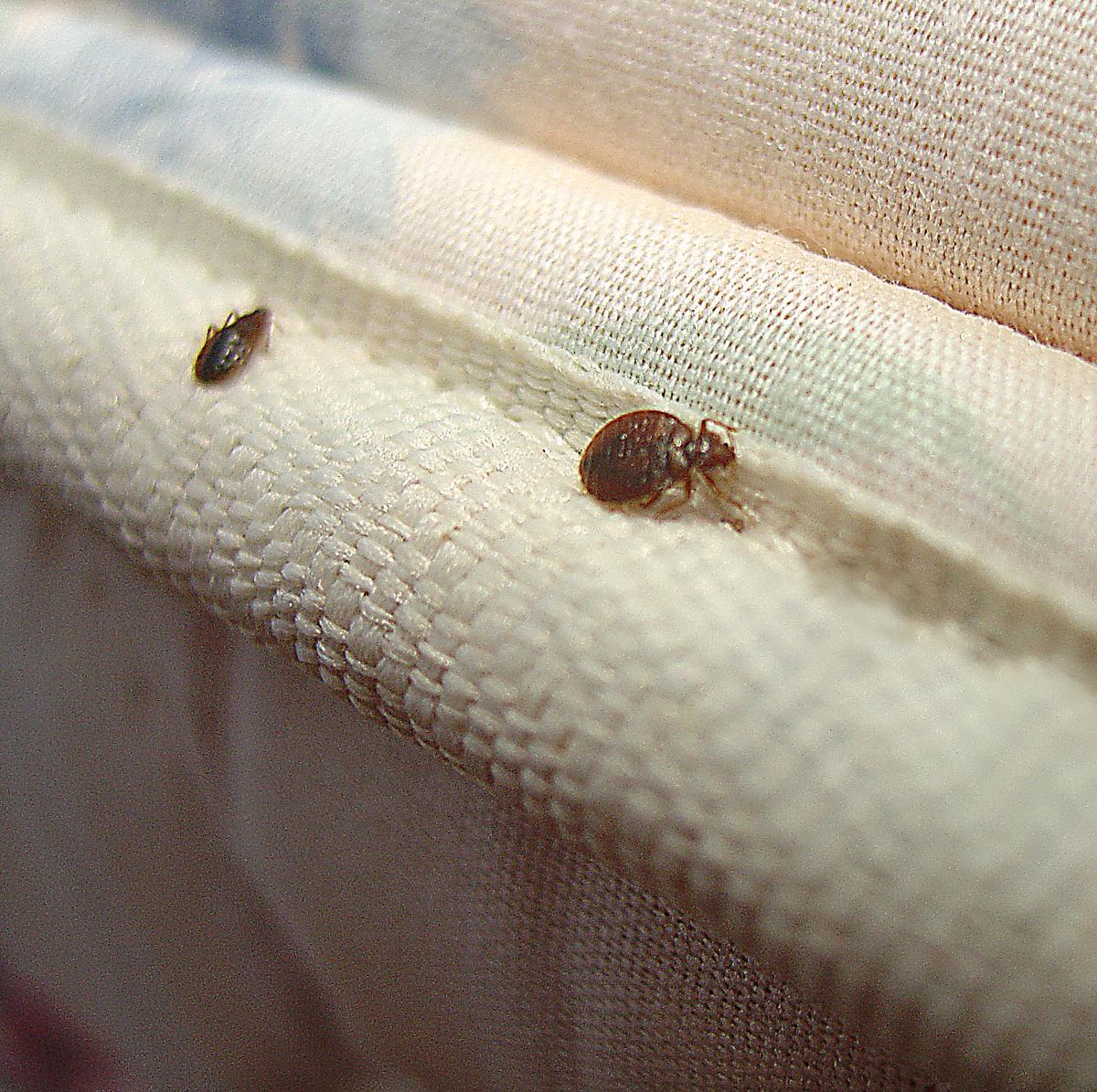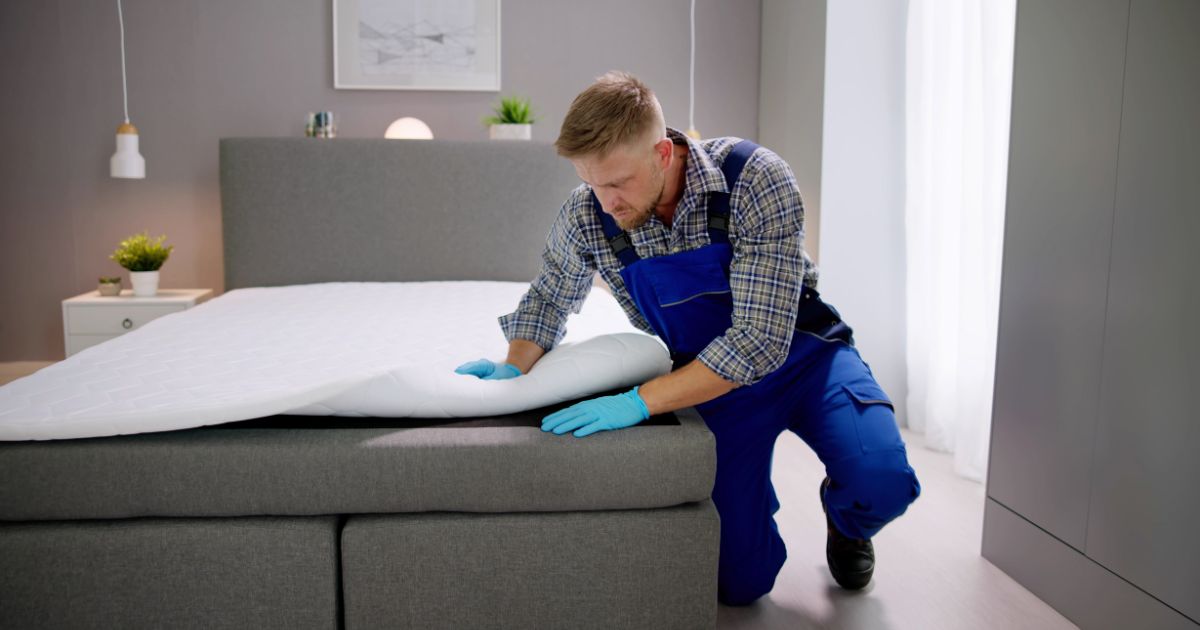To safely move with bed bugs, seal infested items in plastic bags, and use a professional exterminator before relocating to your new home. Moving with bed bugs can be a challenging and stressful experience.
Whether you are relocating to a new city or just moving to a different house, it’s crucial to address the bed bug infestation effectively to avoid spreading the pests to your new location. This article provides practical tips and precautions to ensure a safe and bug-free relocation.
By following these guidelines, you can minimize the risk of transporting bed bugs and prevent infesting your new living space. Understanding how to safely move with bed bugs will help alleviate the stress and potential complications often associated with a bed bug infestation during the moving process.

Credit: www.youtube.com
Preparing For The Move
Preparing for the Move:
Inspecting Furniture And Belongings
Check all furniture and belongings for signs of bed bugs to prevent infestation in new location.
Decluttering And Cleaning
Get rid of unnecessary items to reduce bed bug hiding places and conduct a thorough cleaning.
Packing Strategically
Organize belongings neatly to minimize the spread of bed bugs to new items.
Treating Infested Items
Preventing bed bug infestations while moving involves treating infested items before packing to avoid spreading the pests. Thoroughly inspect belongings, wash and dry on high heat, and seal items in plastic bags to trap bed bugs and prevent re-infestation during the move.
Using Heat Treatment
Freezing Infested Items
Using Pesticides
“`Treating infested items is a crucial step in safely moving with bed bugs. Heat treatment is an effective method to kill bed bugs on infested items such as clothing and bedding.Using Heat Treatment: Treat infested items by placing them in a dryer on high heat for at least 30 minutes.Freezing Infested Items: Another method is to freeze items for several days in a freezer to eliminate bed bugs.Using Pesticides: Certain pesticides can be used on infested items, following manufacturer instructions carefully.Protecting Your New Home
When it comes to moving with bed bugs, protecting your new home is crucial. By taking the necessary precautions, you can ensure that these pesky critters don’t make their way into your new living space. In this section, we will discuss three important steps to safeguard your new home from bed bugs: inspecting the new home, sealing cracks and openings, and using bed bug traps. Let’s delve into each step in detail.
Inspecting The New Home
Before settling into your new home, it is essential to thoroughly inspect the premises to identify any existing bed bug infestations. Take the time to carefully examine the different areas of your home where bed bugs are known to hide. These areas include:
- Matresses and box springs
- Cracks and crevices in furniture
- Behind wallpaper and wall hangings
- Electrical outlets and switches
- Baseboards and moldings
Should you find any signs of an infestation, such as live bed bugs, eggs, or dark spots on the mattress or furniture, it is crucial to address the issue immediately. Consider contacting a professional pest control service to effectively eliminate the problem before settling into your new home.
Sealing Cracks And Openings
To prevent bed bugs from accessing your new home, it is vital to seal any cracks or openings in walls, floors, and furniture. By doing so, you can significantly reduce the chances of a bed bug infestation. Here are a few measures to take:
- Use caulk to seal cracks and crevices in walls and baseboards.
- Fill gaps around pipes and cables with expandable foam.
- Inspect and repair any damages to window screens and door frames.
- Ensure that there are no openings around electrical sockets.
- Consider applying a sealant to wooden furniture to eliminate any hiding spots.
By sealing off these potential entry points, you can create a protective barrier against these unwelcome intruders, promoting a safe and bed bug-free environment in your new home.
Using Bed Bug Traps
In addition to inspecting and sealing your new home, it is highly recommended to utilize bed bug traps as an extra precautionary measure. Bed bug traps work by capturing and immobilizing these pests, preventing them from spreading and reproducing. Here’s how you can effectively use bed bug traps:
- Place bed bug traps underneath each bed leg, as well as under furniture legs, such as couches and chairs.
- Ensure that the traps are placed snugly and securely, making it difficult for bed bugs to crawl out.
- Regularly check and clean the traps, disposing of any captured bed bugs.
Bed bug traps are an inexpensive and effective tool in helping to monitor and control any potential bed bug infestations in your new home. By using them, you can provide an additional layer of protection and peace of mind.

Credit: www.orkin.com
Transporting Infested Items
Moving with bed bugs requires extra caution, especially when it comes to transporting infested items. Proper containment and packaging are essential to prevent spreading the infestation to new locations. Follow these guidelines for transporting infested items safely.
Double Bagging
When dealing with infested items, double bagging is a simple yet effective method to contain bed bugs and prevent them from spreading. Use thick, durable plastic bags and seal them tightly to ensure there are no openings for the bed bugs to escape.
Using Plastic Wrap
Plastic wrap can be used to tightly secure infested items such as furniture or mattresses. Wrapping the items with multiple layers of plastic wrap can prevent bed bugs from escaping and infesting new areas during transit.
Using Protective Covers
Protective covers specifically designed for bed bug containment can be used to encase items such as mattresses, box springs, and furniture. These covers are designed to trap and contain any bed bugs within the item, preventing them from spreading during the move.
Disposing Of Infested Items
When dealing with a bed bug infestation during a move, it’s crucial to properly dispose of any infested items to prevent the spread of these pests. Below are some essential steps to safely and effectively dispose of infested belongings.
Sealing And Labeling
Seal infested items in plastic bags or containers to prevent bed bugs from escaping and infecting other areas. Ensure the bags are tightly sealed with no holes. Label each bag or container clearly as “infested with bed bugs” to alert others and prevent accidental spread.
Following Local Regulations
Before discarding infested items, it’s important to research and adhere to local disposal regulations. Different regions may have specific guidelines for handling infested belongings to prevent environmental contamination and health risks.
Contacting Pest Control
Seek professional guidance from pest control experts when disposing of infested items. They can provide specific instructions on how to effectively eliminate and dispose of infested belongings while minimizing the risk of further spread.

Credit: www.facebook.com
Monitoring For Bed Bugs
When it comes to moving with bed bugs, it is crucial to monitor your surroundings to prevent an infestation. Regular inspections and the use of bed bug monitors can help you stay proactive and detect any signs of these pesky insects. Taking these necessary steps can ensure a safer and smoother move without bringing along any unwelcome guests. Read on to learn more about the importance of regular inspections and how bed bug monitors can assist you in your move.
Regular Inspections
Regular inspections are essential in identifying bed bugs and their hiding spots. By conducting frequent inspections, you can catch a potential infestation before it becomes a major problem. Inspect your mattresses, furniture, electronics, baseboards, and any other potential hiding places. Look for signs such as live bugs, shed skins, bloodstains, or dark spots of excrement. Focus on areas where humans and pets spend most of their time, as bed bugs are attracted to their hosts.
Remember to inspect not only your current living space but also any furniture or items you are planning to move. Thoroughly examine every item before packing, ensuring you don’t unknowingly pack bed bugs along with your belongings. If you find any signs of bed bugs during your inspection, consult a professional exterminator for immediate assistance.
Use Of Bed Bug Monitors
Bed bug monitors are a useful tool in monitoring and detecting bed bugs. These devices can be placed in strategic locations to help catch any pests. There are different types of bed bug monitors available, including active and passive monitors. Active monitors use attractants to lure bed bugs, while passive monitors provide harborage spaces for the bugs to hide, making them easier to spot.
| Types of Bed Bug Monitors | Benefits |
|---|---|
| Active Monitors | Attract bed bugs with CO2 or heat |
| Passive Monitors | Provide hiding spots for bed bugs to reveal their presence |
By using bed bug monitors, you can be alerted to any bed bug activity in your home or during the moving process. Place these monitors in areas where bed bugs are likely to hide, such as near beds, couches, or other upholstered furniture. Regularly check the monitors for any signs of bed bugs, such as live bugs or fecal stains.
It is important to note that while bed bug monitors can be an effective tool, they should not be solely relied upon. Regular inspections, along with the assistance of professional pest control experts, are necessary for a comprehensive approach to bed bug prevention and detection.
Frequently Asked Questions On How To Safely Move With Bed Bugs?
How Do I Safely Transport My Belongings With Bed Bugs?
To safely transport your belongings with bed bugs, wrap items in sealed plastic bags, use heat treatment, or hire a professional pest control service to ensure thorough extermination.
Can Bed Bugs Be Completely Eradicated During A Move?
Yes, bed bugs can be completely eradicated during a move by implementing thorough cleaning and pest control measures. This includes using heat treatments, vacuuming, and professional extermination services.
What Precautions Should I Take When Moving To Avoid Bed Bugs?
When moving to a new location, ensure that all items are thoroughly inspected, cleaned, and sealed to prevent the spread of bed bugs. Use protective coverings and consider professional pest control services.
Is It Safe To Use Diy Bed Bug Removal Methods During A Move?
While DIY methods may help temporarily, it’s best to use professional pest control services for complete eradication. DIY methods may not fully eliminate bed bugs, leading to potential re-infestation during the move.
Conclusion
Moving with bed bugs can be a daunting task, but with careful planning and proper precautions, it can be done safely. By following the steps outlined you can minimize the risk of spreading bed bugs to your new home or to others.
Remember to thoroughly clean and treat your belongings before packing them, and consider hiring professional exterminators for effective bed bug elimination. Keep in mind that early detection and prevention are key to avoiding future infestations. Stay vigilant and take the necessary measures to ensure a bug-free move.

I’m MD Tanvir, and I bring years of expertise gained from working closely with pest control companies to the forefront. My journey in the industry has inspired me to launch Bug Battler, a platform aimed at equipping people with the know-how to combat pests autonomously. Through Bug Battler, I aim to empower individuals with practical insights to tackle pest infestations effectively.

